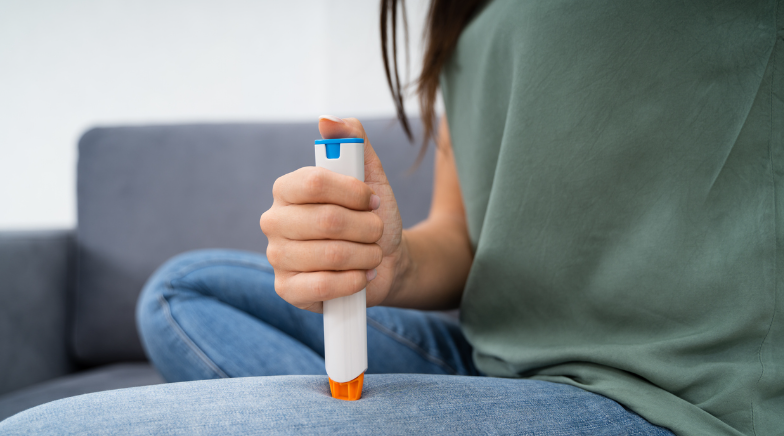Die fünf wichtigsten lebensverbessernden Medizinprodukte
Ob große oder kleine – medizinische Erfindungen haben nicht nur Medizingeschichte geschrieben, sondern auch die Sicherheit der Patienten und deren Lebensqualität verbessert. Zugrunde lag stets ein Höchstmaß an Entschlossenheit, und diese Geräte ebneten dann den Weg in eine gesündere Zukunft für die Menschheit.
Eine Auswahl der „Top“-Medizinprodukte ist subjektiv und hängt von verschiedenen Faktoren wie Innovation, Wirkung und Patientenergebnissen ab. Jedoch gibt es einige Medizinprodukte, die im Laufe der Jahre die Sicherheit und Lebensqualität von Patienten deutlich verbessert haben. Ohne eine bestimmte Reihenfolge stellen wir Ihnen fünf bemerkenswerte Produkte kurz vor.

Der 1950 durch den Biomedizin-Ingenieur John Hopps entwickelte Herzschrittmacher hat bereits Hunderttausende Herzen am Schlagen gehalten. Der Herzschrittmacher reguliert den Herzschlag, indem er das Herz durch eine Reihe elektrischer Signale stimuliert. Der Herzschrittmacher ist etwa so groß wie eine normale Streichholzschachtel und kann sowohl im als auch am Körper getragen werden. Dieses Gerät wirkt sich erheblich auf die Lebenserwartung der Patienten aus und verlängert das Leben um durchschnittlich 10 weitere Jahre.
Bei seiner ersten Einführung im Jahr 1972 war das Cochlea-Implantat (CI) für Menschen mit schwerem Hörverlust revolutionär. Im Gegensatz zu Hörgeräten wird dieses Gerät chirurgisch in die Cochlea implantiert. Die Entwicklung des CI begann mit der Entdeckung, dass ein elektrischer Strom Töne an das Gehirn übertragen kann. Mit einer ähnlichen Funktionalität arbeiten CIs heute, indem sie Schall empfangen und verarbeiten, der dann an den Hörnerv gesendet wird. Im Durchschnitt haben Patienten mit dem Implantat ein sechs- bis siebenmal besseres Hörvermögen als ohne.
Die Ende der 1970er Jahre eingeführte Insulinpumpe hat Patienten mit Typ-1- und Typ-2-Diabetes geholfen. Dieses Produkt setzt Insulin so ähnlich frei, wie es Ihr Körper auf natürliche Weise tun würde. Einer der Hauptvorteile der Insulinpumpe besteht darin, dass weniger Nadelstiche nötig sind als bei herkömmlichen Insulininjektionen. Insgesamt hat dieses Gerät unzähligen Patienten dabei geholfen, ihren Blutzucker bequemer zu kontrollieren und so ein glücklicheres und gesünderes Leben zu führen.
Ein Beatmungsgerät ist ein Gerät, das in der Intensivmedizin eingesetzt wird, um Patienten zu helfen, die nicht selbstständig atmen können. Die Entwicklung dieses Geräts begann in den 1920er Jahren und wurde hauptsächlich für Patienten mit Polio eingesetzt. Seitdem wurden mehrere Variationen des Geräts entwickelt, die schließlich zum heute verwendeten Überdruckbeatmungsgerät führten. Dieses Gerät funktioniert, indem es mechanisch eine Mischung aus Raumluft und Sauerstoff in die Lunge drückt. Während der COVID-19-Pandemie gehörten Beatmungsgeräte zu den wertvollsten medizinischen Geräten in Krankenhäusern, da sie unzähligen Patienten beim Atmen halfen.
Der Autoinjektor wurde in den 1970er Jahren vom Biomedizin-Ingenieur Sheldon Kaplan für das US-Militär eingeführt, um Soldaten vor chemischer Kriegsführung zu schützen. Seitdem wurden Autoinjektoren weiterentwickelt und haben ihren Weg in die allgemeine Gesundheitsversorgung gefunden. Der bekannteste Autoinjektor ist der EpiPen®, der Menschen mit schweren Allergien und Anaphylaxie-Risiko verschrieben wird. Autoinjektoren verabreichen nicht nur lebensverbessernde oder in vielen Fällen lebensrettende Medikamente, sie tun dies auch auf eine Weise, die dem Patienten die Kontrolle gibt. Dieses Gerät ermöglicht es Patienten, sich Medikamente auf Injektionsbasis selbst zu verabreichen – und das ganz einfach, was besonders für Menschen nützlich ist, die keine Nadeln mögen.
Jedes einzelne Medizinprodukt hat auf die eine oder andere Weise Einfluss auf die menschliche Gesundheit und Sicherheit genommen, und es gibt noch viele weitere, die auf dieser Liste stehen könnten. Gemeinsam zeigen sie, welchen Einfluss die Medizintechnik auf unsere kollektive Lebensqualität hat.



